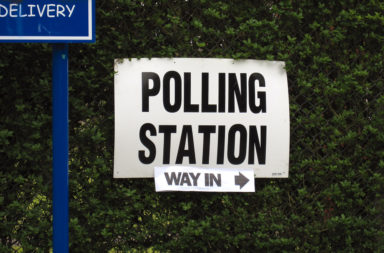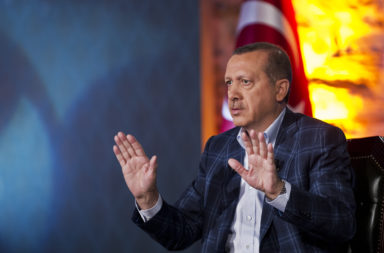The rapprochement between China and the Philippines has ostensibly avoided the prospect of a confrontation in the South China Sea. On the sidelines of a two-day summit about China’s global development project, held in Beijing on May 14-15, the Philippine ambassador announced plans for talks with China over its territorial claims in the sea.
2016 was one of the most important years in the evolution of the South China Sea dispute. On July 12, the Arbitral Tribunal of the Permanent Court of Arbitration ruled overwhelmingly in the Philippines’ favour over the disputed area.
China’s worst nightmare materialised in the form of a legal ruling on the dispute. The Philippines successfully exposed the legal weakness of Chinese claims to the territory under the United Nations Convention on the Law of the Sea (UNCLOS).
Sea of fire to sea of cooperation?
The Chinese government refused to acknowledge any measure the tribunal proclaimed. Chinese Defence Minister Chang Wanquan amplified regional tensions when he suggested:
Military, police and people should prepare for mobilisation to defend national sovereignty and territorial integrity.
This dangerous environment appeared to be a one-way road to military escalation. But it actually turned into the first stage of rapprochement between the Philippines and China. The main reason behind this twist of events was that Rodrigo Duterte had become the Philippines’ new president on June 30.
Duterte’s position on the South China Sea issue was ambiguous during his campaign: he shifted from a conciliatory to a more aggressive stance. During a presidential debate, for instance, he promised to ride a jetski to Scarborough Shoal and plant a Philippine flag there.
But, shortly after the Arbitral Tribunal’s decision, Duterte called for negotiations over the disputed territory.
Duterte’s unpredictability has helped shape the current situation in the region. He first decided to denigrate the US, directly insulting its outgoing president, Barack Obama.
He then knelt before President Xi Jinping during an official state visit to Beijing, pledging his loyalty to China and announcing his separation from the US.
Duterte has also contributed to the creation of a new collective “we” – in which China, Russia and the Philippines have become a sort of anti-imperialistic front. He has said previously it is “the three of us against the world”.
INSERT VIDEO
The Trump train and the Philippines
Duterte and US President Donald Trump share the same political approach – one based on individualism, attention-seeking and verbal violence. They also present themselves in a quite similar way: as the protectors of the underprivileged, champions of the anti-establishment, and the quintessence of machismo.
Their political resemblance is remarkable, and it may well have diplomatic implications.
During his campaign and first few weeks in office, Trump targeted China as the main cause of the US economy’s problems. His secretary of state, Rex Tillerson, reflected Trump’s stance.
During his confirmation hearing, Tillerson suggested a naval blockade to restrict Chinese access to the Spratly Islands. He also compared the South China Sea issue to Russia’s occupation of Crimea.
Despite this adversarial approach, the Washington-Beijing relationship gradually improved in the following months. The summit between Donald Trump and Xi Jinping, held in Trump’s Mar-a-Lago resort, represented a symbolic first step for thir mellowing relations.
The Philippines may benefit from an unpredictable Sino-US relationship in several ways.
First, Duterte has not formally ended his country’s relationship with the US, which is still an ally. His anger was aimed at Obama’s America, which was perceived as intrusive and politically disrespectful. Trump’s America offers new opportunities.
As soon as Trump entered the White House, the Philippines’ position began to change. Despite their rapprochement, the Philippines questioned China’s peaceful rhetoric and objected to the construction of new military facilities in the Spratly.
Duterte then shifted focus again; he accused the US of building permanent arms depots in the Philippines.
This changing posture has not been casual. Rather, it is a political calculation that shows the Philippines is a new regional hedger.
Duterte inherited the arbitration against China and the commitment to the US pivot to Asia from the Aquino administration. These do not represent his political choices or his strategic plan for the country.
INSERT VIDEO
Not bandwagoning, hedging
Duterte now has the opportunity to shape his foreign policy choices in relation to the two competing global powers.
His “hedging” strategy turns on its head the classic doctrine of maximising benefits and avoiding confrontation. His goal involves preserving the Philippines’ claims in the South China Sea and reinforcing economic ties with China.
And the US presence in the region might become a better foreign target for Duterte’s populism and nationalistic rhetoric.
Even if Duterte accuses the US of putting regional stability at risk, he actually benefits from continued US military presence in his country and the region. It represents an excellent safety blanket in case of a military escalation; Duterte is well aware that the Philippines’ armed forces have zero chance against Chinese military power.
Unlike his predecessor, Trump will probably not interfere in the Philippines’ domestic policies and would be more than happy to reconnect with America’s historical ally. Duterte, meanwhile, is at an interesting place – leaning on China for financial support, and looking to the US for security cover.




